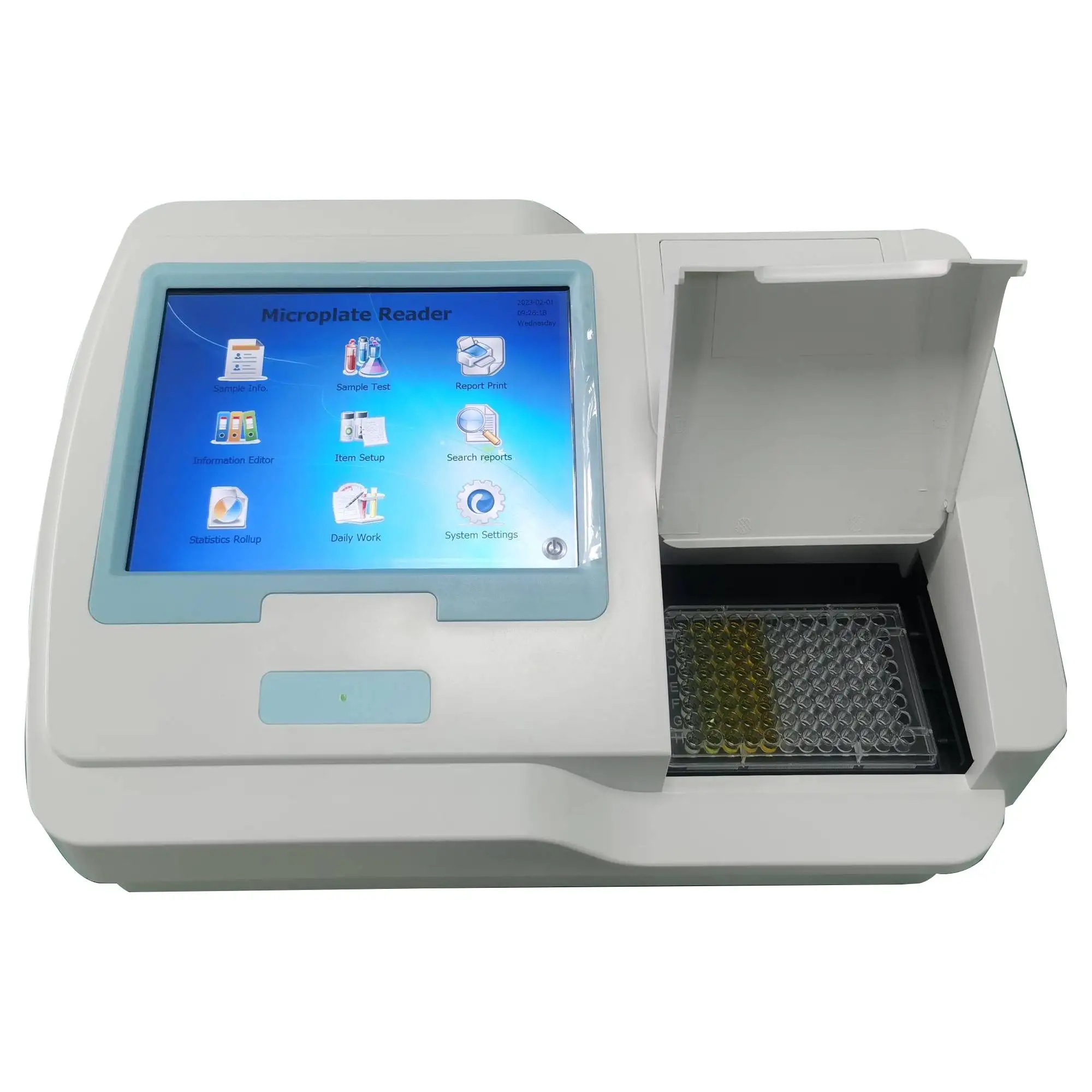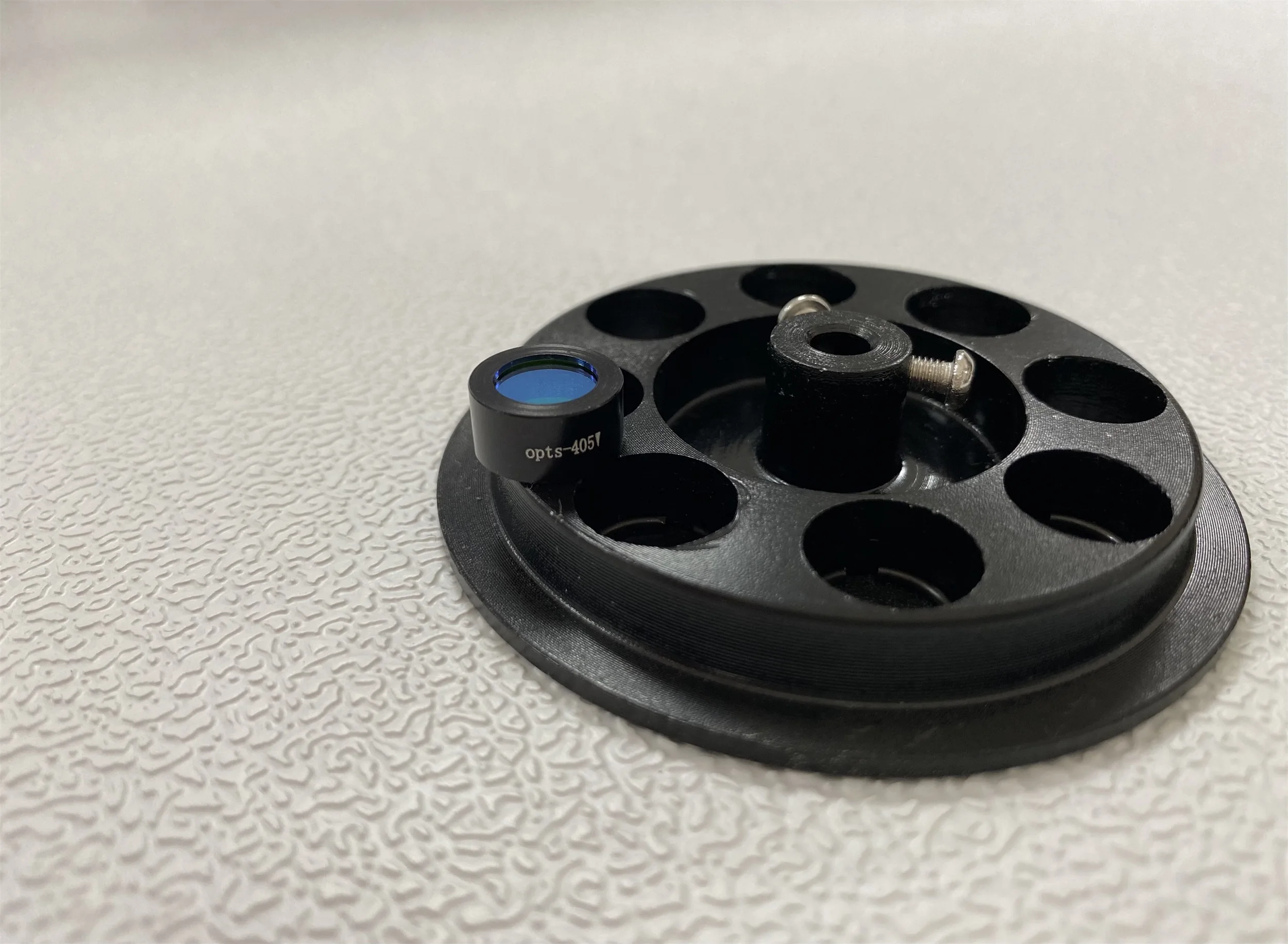- This topic is empty.
-
AuthorPosts
-
2025-07-21 at 10:20 am #25580
 For Diatek DR series Elisa readers, their standard filters are all 405nm,450nm,492nm and 630nm.Sometimes we may have a question that why they could not be other type filters .
For Diatek DR series Elisa readers, their standard filters are all 405nm,450nm,492nm and 630nm.Sometimes we may have a question that why they could not be other type filters .To clear out this issue, we first need to know,
the core principle of ELISA is to produce colored products by catalyzing substrates with enzymes, and then quantitatively analyze the concentration of antigens/antibodies by detecting the absorbance of the products. The substrates corresponding to different enzymes will produce specific wavelengths of light absorption, and the standard filter corresponds to the most commonly used substrate system:
450nm: the core detection wavelength
-
The most commonly used substrate for horseradish peroxidase (HRP) is TMB (tetramethylbenzidine).
-
TMB is oxidized under HRP catalysis to produce a blue product, which turns yellow after terminating the reaction (such as adding sulfuric acid). Its maximum absorption peak is around 450nm, making it the most widely used detection system in ELISA (more than 80% of ELISA kits use HRP-TMB combination).

492nm: Another substrate adapted to HRP
-
Another type of substrate corresponding to HRP – OPD (o-phenylenediamine).
-
After OPD oxidation, an orange yellow product is generated with a maximum absorption peak at 492nm. Although it is gradually replaced by TMB due to potential toxicity, some traditional reagent kits are still in use, so 492nm is retained as an alternative wavelength.
405nm: substrate suitable for alkaline phosphatase (ALP)
-
The commonly used substrate for alkaline phosphatase (ALP) is PNPP (p-nitrophenyl phosphate).
-
PNPP generates yellow p-nitrophenol under ALP catalysis, with a maximum absorption peak at 405nm. The ALP-PNPP system is commonly used in experimental scenarios that interfere with HRP and is an important supplement to the HRP system.
630nm: reference wavelength (corrected background)
-
630nm belongs to the red light wavelength, and usually no color products absorb at this wavelength. It is mainly used to deduct background interference (such as non-specific absorbance caused by scratches on the well plate, bubbles, sample turbidity, etc.).
-
In actual testing, "450nm absorbance -630nm absorbance" is often used as the final result to improve data accuracy.
Besides, the above four wavelengths cover over 95% of commonly used enzyme substrate combinations (HRP-TMB, HRP-OPD, ALP-PNPP) in ELISA, which can meet the routine needs of scientific research and clinical testing without the need for additional filters.
That is the reason why these 4 filters can be the standard filters for ELISA readers.
http://www.hiwelldiatek.com
Wuxi Huawei Diatek Instrument Co., Ltd. -
-
AuthorPosts
- You must be logged in to reply to this topic.